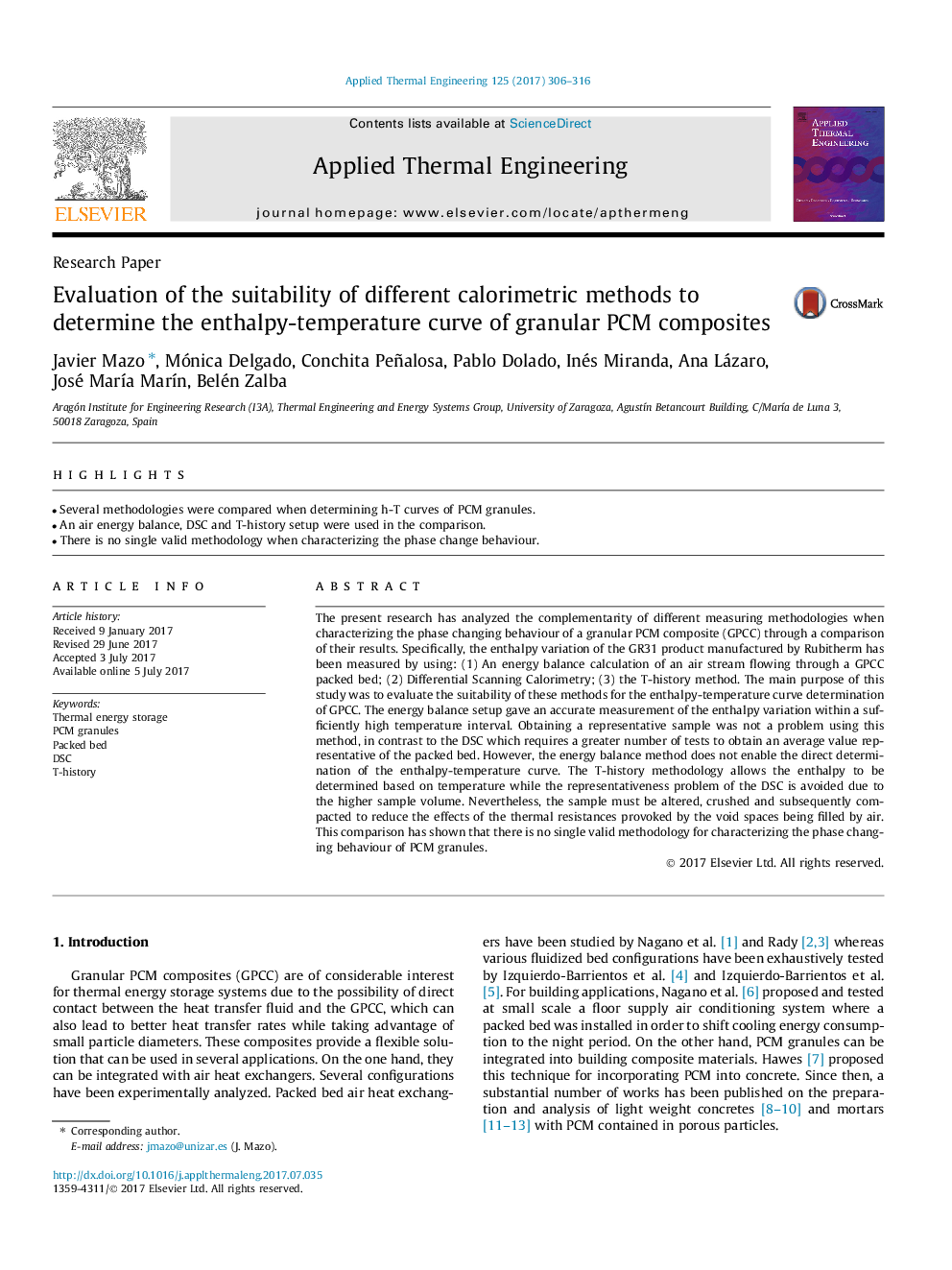| Article ID | Journal | Published Year | Pages | File Type |
|---|---|---|---|---|
| 4991186 | Applied Thermal Engineering | 2017 | 11 Pages |
Abstract
The present research has analyzed the complementarity of different measuring methodologies when characterizing the phase changing behaviour of a granular PCM composite (GPCC) through a comparison of their results. Specifically, the enthalpy variation of the GR31 product manufactured by Rubitherm has been measured by using: (1) An energy balance calculation of an air stream flowing through a GPCC packed bed; (2) Differential Scanning Calorimetry; (3) the T-history method. The main purpose of this study was to evaluate the suitability of these methods for the enthalpy-temperature curve determination of GPCC. The energy balance setup gave an accurate measurement of the enthalpy variation within a sufficiently high temperature interval. Obtaining a representative sample was not a problem using this method, in contrast to the DSC which requires a greater number of tests to obtain an average value representative of the packed bed. However, the energy balance method does not enable the direct determination of the enthalpy-temperature curve. The T-history methodology allows the enthalpy to be determined based on temperature while the representativeness problem of the DSC is avoided due to the higher sample volume. Nevertheless, the sample must be altered, crushed and subsequently compacted to reduce the effects of the thermal resistances provoked by the void spaces being filled by air. This comparison has shown that there is no single valid methodology for characterizing the phase changing behaviour of PCM granules.
Related Topics
Physical Sciences and Engineering
Chemical Engineering
Fluid Flow and Transfer Processes
Authors
Javier Mazo, Mónica Delgado, Conchita Peñalosa, Pablo Dolado, Inés Miranda, Ana Lázaro, José MarÃa MarÃn, Belén Zalba,
